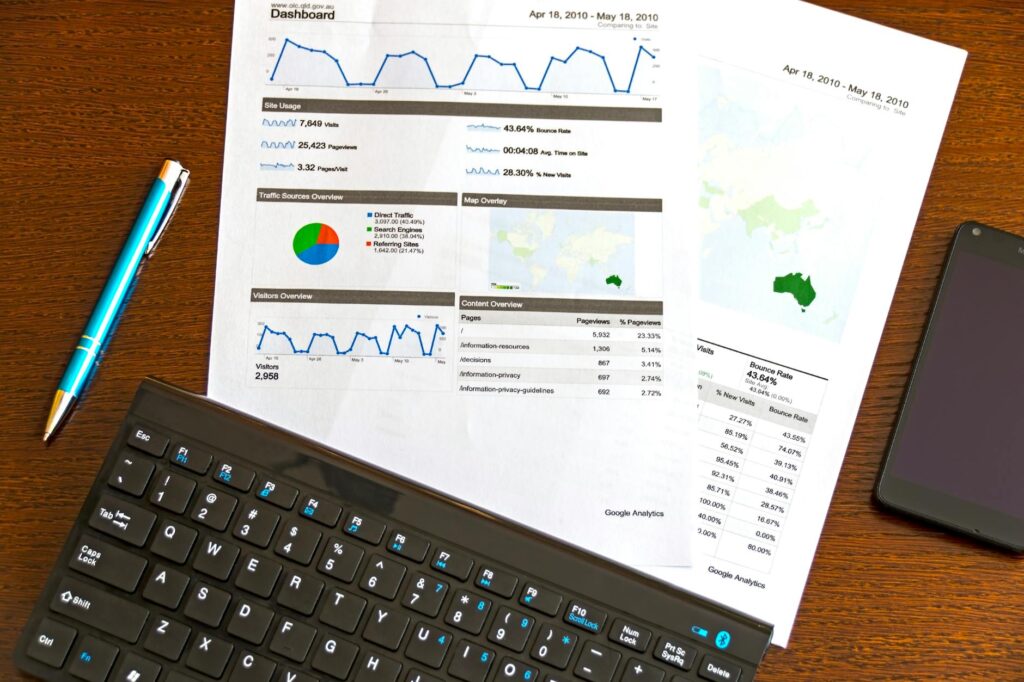Inbound marketing is one of the most effective ways to grow your business online. By attracting the right audience with valuable content, engaging them, and converting them into loyal customers, inbound marketing builds sustainable growth.
But here’s the thing: if you don’t measure your inbound marketing efforts, you won’t know what’s working, what’s failing, or where to improve. Many businesses create content, post on social media, and run campaigns, but they do so blindly without tracking results.
Measuring inbound marketing is not just about vanity metrics like likes or page views it’s about tracking the numbers that impact your business goals.
In this guide, we’ll explore how to measure inbound marketing effectively, step by step, so you can make data-driven decisions and improve ROI.
Step 1: Set Clear Goals
Before measuring anything, you need goals. Goals act as the benchmark for success and help you focus on what matters.
- Do you want more leads?
- Are you aiming to increase website traffic?
- Is customer retention your priority?
Use SMART goals (Specific, Measurable, Achievable, Relevant, Time-bound) to define what success looks like.
Example:
“Generate 300 qualified leads in the next 3 months through blog content, landing pages, and email campaigns.”
Without clear goals, your measurement will lack direction, and data becomes meaningless.
Step 2: Track Website Traffic
Website traffic is the first indicator of how well your inbound marketing is attracting an audience.
- Organic traffic: Visitors who find your website through search engines. High organic traffic means your SEO and content strategy is working.
- Referral traffic: Visitors from other websites linking to your content. This shows your content is valuable and shareable.
- Direct traffic: People typing your URL directly. Indicates brand awareness and loyalty.
- Social traffic: Visitors coming from social media platforms. Helps you measure engagement on social channels.
Tools to use: Google Analytics, HubSpot, or any other analytics platform.
Step 3: Measure Lead Generation
Traffic alone isn’t enough you need to convert visitors into leads. Track the following metrics:
- Form submissions: How many visitors fill out contact forms or sign up for newsletters.
- Downloads of gated content: eBooks, checklists, or whitepapers downloaded in exchange for contact information.
- Event registrations: Webinars, online workshops, or demos.
Measuring lead generation helps you understand whether your content is effectively capturing potential customers.
Step 4: Track Conversion Rates
Conversion rates indicate how many visitors or leads take a desired action.
- Landing page conversion rate: Percentage of visitors completing the form or CTA on a landing page.
- Email conversion rate: Percentage of email recipients who clicked and took the desired action.
- Blog-to-lead conversion: Percentage of blog readers who became leads.
High traffic but low conversion means your content attracts attention but fails to persuade. Analyse your pages, forms, and CTAs to improve performance.
Step 5: Analyse Customer Acquisition
Inbound marketing ultimately aims to convert leads into paying customers. Track:
- Sales qualified leads (SQLs): Leads that meet your criteria for sales outreach.
- Closed deals: How many leads converted into customers.
- Cost per acquisition (CPA): Total marketing spend divided by the number of new customers acquired.
This helps you measure the direct impact of inbound efforts on revenue.
Step 6: Track Engagement Metrics
Engagement metrics indicate how your audience interacts with your content and brand:
- Time on page: Longer time suggests valuable content.
- Bounce rate: High bounce may indicate irrelevant content or poor UX.
- Social shares and comments: Shows how content resonates with your audience.
- Email open and click-through rates: Measures how compelling your email campaigns are.
Engagement metrics help optimise content and campaign strategies for better results.
Step 7: Analyse Marketing ROI
ROI (Return on Investment) measures the profitability of your inbound efforts.
- Calculate revenue generated from inbound campaigns.
- Deduct total cost (content creation, tools, ads, agency fees).
- Divide by cost to get ROI percentage:
ROI = (Revenue – Cost) ÷ Cost × 100
Measuring ROI shows which campaigns are worth continuing and which need adjustment.
Step 8: Use Marketing Analytics Tools
Several tools help measure inbound marketing performance effectively:
- Google Analytics: Tracks traffic, behaviour, and conversions.
- HubSpot: All-in-one inbound marketing platform with lead tracking and reporting.
- SEMrush / Ahrefs: Monitors SEO performance, backlinks, and keyword rankings.
- Social media analytics: Facebook Insights, LinkedIn Analytics, Twitter Analytics.
These tools provide data for informed decision-making and continuous optimisation.
Step 9: Monitor the Buyer’s Journey
Inbound marketing isn’t just about leads it’s about guiding prospects through the funnel. Measure metrics at each stage:
- Awareness: Page views, organic traffic, social engagement.
- Consideration: Email clicks, content downloads, webinar attendance.
- Decision: Demo requests, trial sign-ups, purchases.
Analysing each stage helps identify bottlenecks and opportunities to improve conversions.
Step 10: Regular Reporting and Optimisation
Measuring inbound marketing is an ongoing process.
- Create weekly or monthly reports to track progress.
- Compare results with goals to see what’s working.
- Optimise campaigns: Refresh underperforming content, test new CTAs, improve landing pages.
- Continuously refine strategies based on data to improve ROI and engagement.
Regular reporting ensures your inbound strategy evolves with your audience and market.
Common Mistakes to Avoid
- Focusing on vanity metrics: Likes and page views are nice but don’t always reflect real business impact.
- Ignoring attribution: Understand which channels drive actual leads and sales.
- Not tracking full buyer journey: Leads may drop off if only early-stage metrics are measured.
- Overlooking testing: A/B testing helps improve conversions and engagement.
- Delayed measurement: Measuring too late prevents timely optimisation.
Avoiding these mistakes keeps your inbound marketing measurable and effective.
Conclusion
Inbound marketing can transform your business but only if you measure it properly. By tracking traffic, leads, conversions, engagement, and ROI, you gain insights that help improve campaigns, allocate resources wisely, and achieve your business goals.
Remember: measurement isn’t a one-time task. It’s an ongoing process of tracking, analysing, and optimising. The better you measure, the more effective your inbound marketing campaigns become.
Want to See Real Results from Your Inbound Marketing?
Measuring your inbound marketing is key to growth and ROI. I help businesses track, analyse, and optimise campaigns to generate leads and conversions. If you’re ready to make your inbound efforts data-driven, let’s connect and build a measurable strategy for your business.


